
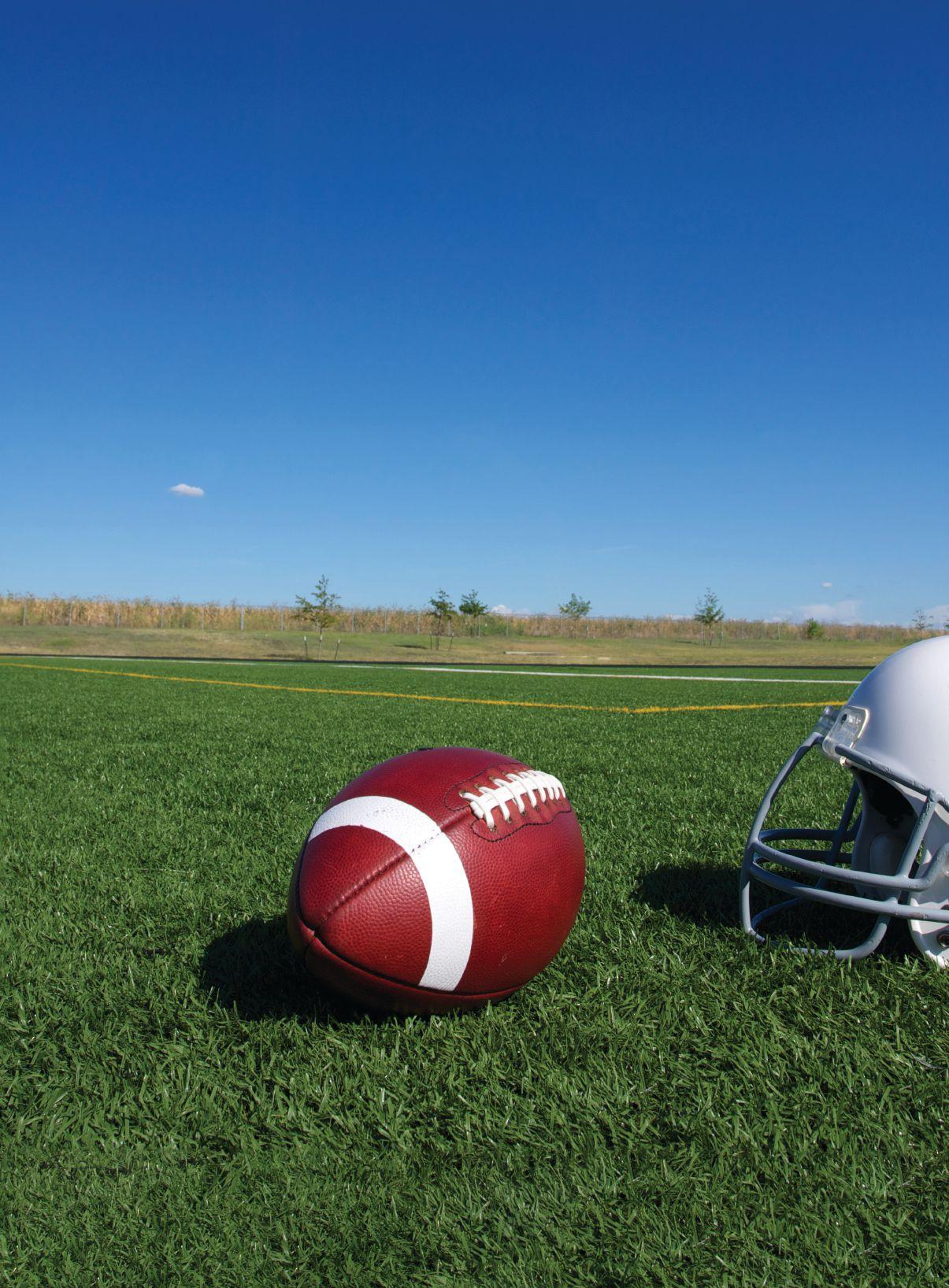



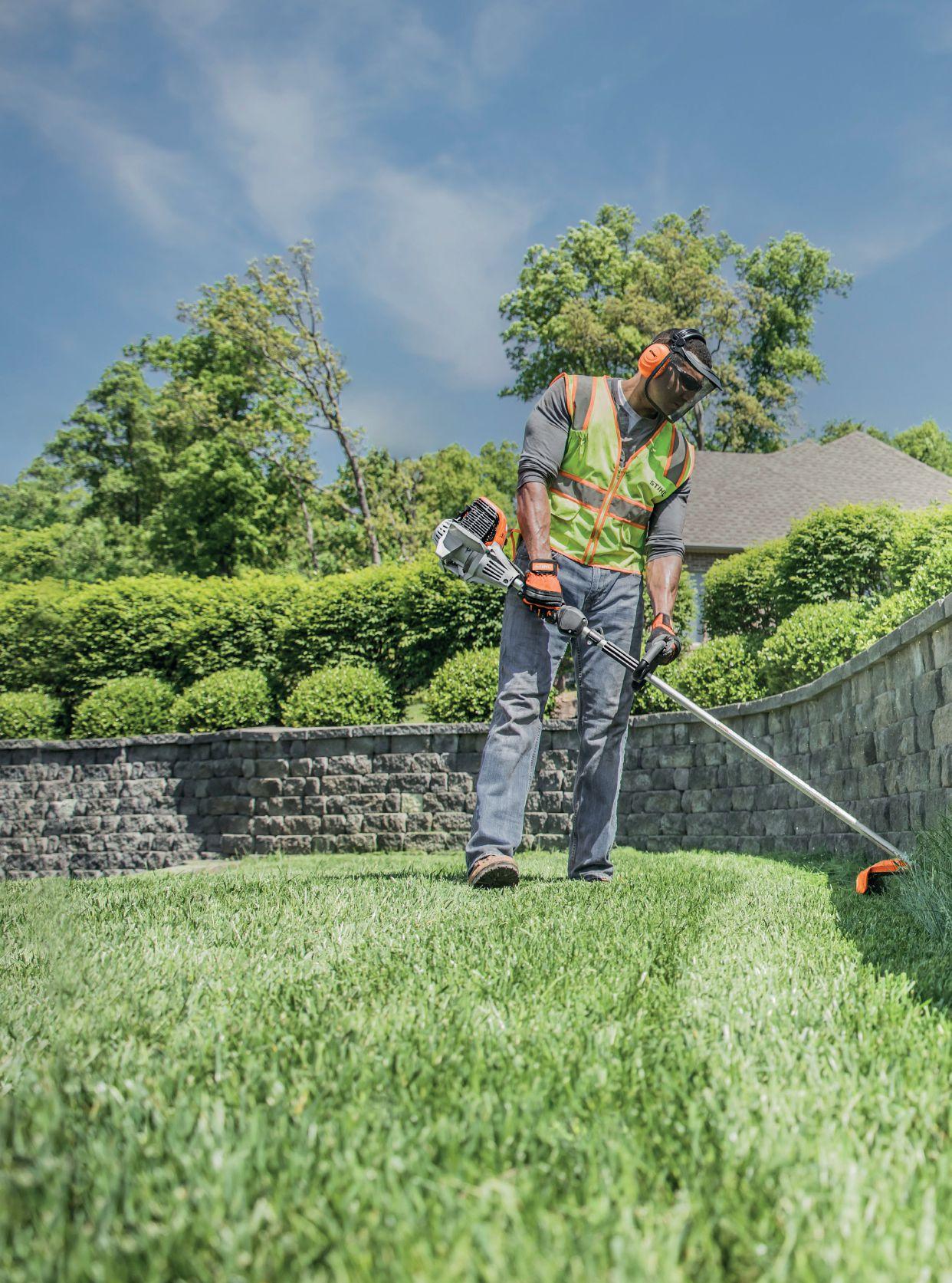
The consistent performance, dependability and effortless feel of the FS 91 R brushcutter makes this unit a must-have in a landscaper’s fleet. The FS 91 R is built with STIHL’s unbeatable quality and is extremely easy to maintain. With the low-emission engine and the large 710 mL fuel tank of the FS 91 R, you increase production with long runtimes. Built with a starting system that can be relied on is key for a landscaper who has a demanding day. The starting procedure on the FS 91 R is a simple process with an easy-to-operate stop switch with standby mode. It also features a redesigned guard to reduce weight, a superior air filtration system that allows an extended service life, as well as an improved rubberized loop handle design that offers extra comfort with fewer vibrations. It’s the ideal tool for working on large areas of tough grass.

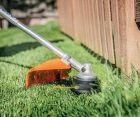
STIHL’s Pro-Fleet Commercial Landscape Program is designed to provide commercial landscapers a volume discount on major purchases of five or more landscaping power tools. Visit your STIHL Dealer today to find out more and take advantage of the savings!


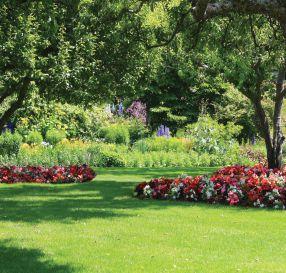
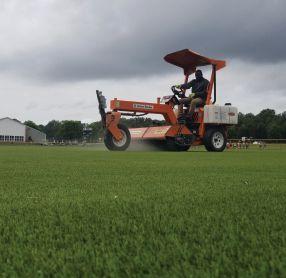
Ontario golf courses to remain locked down through order
| Industry innovators Mowing the lawn and not the flowers

By Mike Jiggens
Ontario’s golf industry was dealt another blow in mid-May when it was announced the province’s already extended stay-at-home order was to be prolonged yet again, through to June 2. And – once more – golf wasn’t granted any kind of exemption.
This was news the industry didn’t want to hear. Golf’s inclusion in the initial lockdown order, which was announced in mid-April, caught the industry off guard. Ontario’s golf courses were given the green light to open in the spring once Mother Nature gave her blessing, and spring’s early arrival in most parts of the province allowed many courses to open two to three weeks earlier than normal.
Although Ontario’s positive COVID-19 case numbers were on the rise – particularly in such hot spots as Toronto and Peel Region – golf courses had demonstrated they could operate safely in spite of the health crisis. This was evident in 2020 and again in the first few weeks of the interrupted 2021 season. Golf, it seemed, was in no danger of being shut down, especially since not a single case of COVID-19 was found to be associated with any of Canada’s golf courses.
Ontario’s golf courses were understandably caught by surprise when they were lumped among the various other businesses forced to
close their doors during the stay-at-home order. The industry was somewhat optimistic that common sense might prevail, and its inclusion in the lockdown order might be rescinded, especially after medical professionals suggested golf posed little risk and was recommended for one’s physical and mental health.
Somehow, the powers that be felt that shutting down golf was necessary to help stop the spread of COVID. As of the third week of May, Ontario was the only jurisdiction in North America, and the only one in the world where golf is traditionally played, to outlaw the game.
According to Premier Doug Ford, the problem isn’t so
With or without play, golf courses need to be maintained daily and can’t be neglected.
much about what happens on the course, it’s what happens immediately after 18 holes have been played. Relying on information provided by his “buddies,” he said golfers like to congregate afterwards for a few “pops,” and this is apparently the reason why golf has been shuttered. It’s comforting to know he’s getting his advice from such sound sources as his buddies rather than medical professionals who, seemingly, don’t know what they’re talking about.
So what’s happening as a
consequence of all of this politicking is that golf courses are losing piles of money every day they’re unable to operate. This isn’t as simple as closing the gates at golf courses for four to six weeks. With or without play, golf courses need to be maintained daily. They cannot be neglected, and the superintendent and his/her team of turf maintenance employees must still be paid. Without a steady revenue stream, many of Ontario’s golf courses are reaching the breaking point.
While many other businesses have struggled during the pandemic, golf has been one of the more pleasant success stories amid the health crisis. Most Canadian courses enjoyed their best seasons in decades last year, in spite of their delayed openings, and have been off to a rollicking start again this year.
Other than Ontario – and Alberta to a certain extent –Canada’s other provinces are largely experiencing a second consecutive year of fully booked tee times and unwavering enthusiasm for golf. It’s no secret that the industry has been rather anemic in recent years and that it took a health crisis to turn its fortunes around.
To save golf in Ontario from this prolonged stay-at-home order, it’s going to take a premier who’s willing to reel in his lockdown happiness and listen to the sound advice provided by medical professionals. Simply put, there’s no excuse for putting Ontario golf in jeopardy any longer. The rest of Canada knows what it’s doing. Ontario needs to follow suit.
www.turfandrec.com
Reader Service
Print and digital subscription inquiries or changes, please contact
Anita Madden, Audience Development Manager
Tel: (416) 510-5183 Fax: (416) 510-6875 email: amadden@annexbusinessmedia.com
Mail: 111 Gordon Baker Rd., Suite 400 Toronto, ON M2H 3R1
Editor Mike Jiggens mjiggens@annexbusinessmedia.com
National Advertising Manager
Rebecca Lewis 519-400-0322 rlewis@annexbusinessmedia.com
Nashelle Barsky 905-431-8892 nbarsky@annexbusinessmedia.com
Account Coordinator Mary Burnie 519-429-5175 mburnie@annexbusinessmedia.com
Group Publisher Todd Humber thumber@annexbusinessmedia.com
COO Scott Jamieson sjamieson@annexbusinessmedia.com
Printed in Canada ISSN 1186-0170
PUBLICATION MAIL AGREEMENT #40065710
SUBSCRIPTION RATES
Published 7 times a year – Jan/Feb, Mar, Apr/May, Jun/Jul, Aug/Sept, Oct, Nov/Dec Canada – 1 year $35.00; 2 year $45.00 3 years $55.50 (plus applicable taxes HST 86717 2652 RT0001
Occasionally, Turf and Recreation will mail information on behalf of industry related groups whose products and services we believe may be of interest to you. If you prefer not to receive this information, please contact our circulation department in any of the four ways listed above.
Annex Privacy Office privacy@annexbusinessmedia.com Tel: 800.668.2374
No part of the editorial content of this publication may be reprinted without the publisher’s written permission © 2021 Annex Business Media. All rights reserved. Opinions expressed in this magazine are not necessarily those of the editor or the publisher. No liability is assumed for errors or omissions.
All advertising is subject to the publisher’s approval. Such approval does not imply any endorsement of the products or services advertised. Publisher reserves the right to refuse advertising that does not meet the standards of the publication.




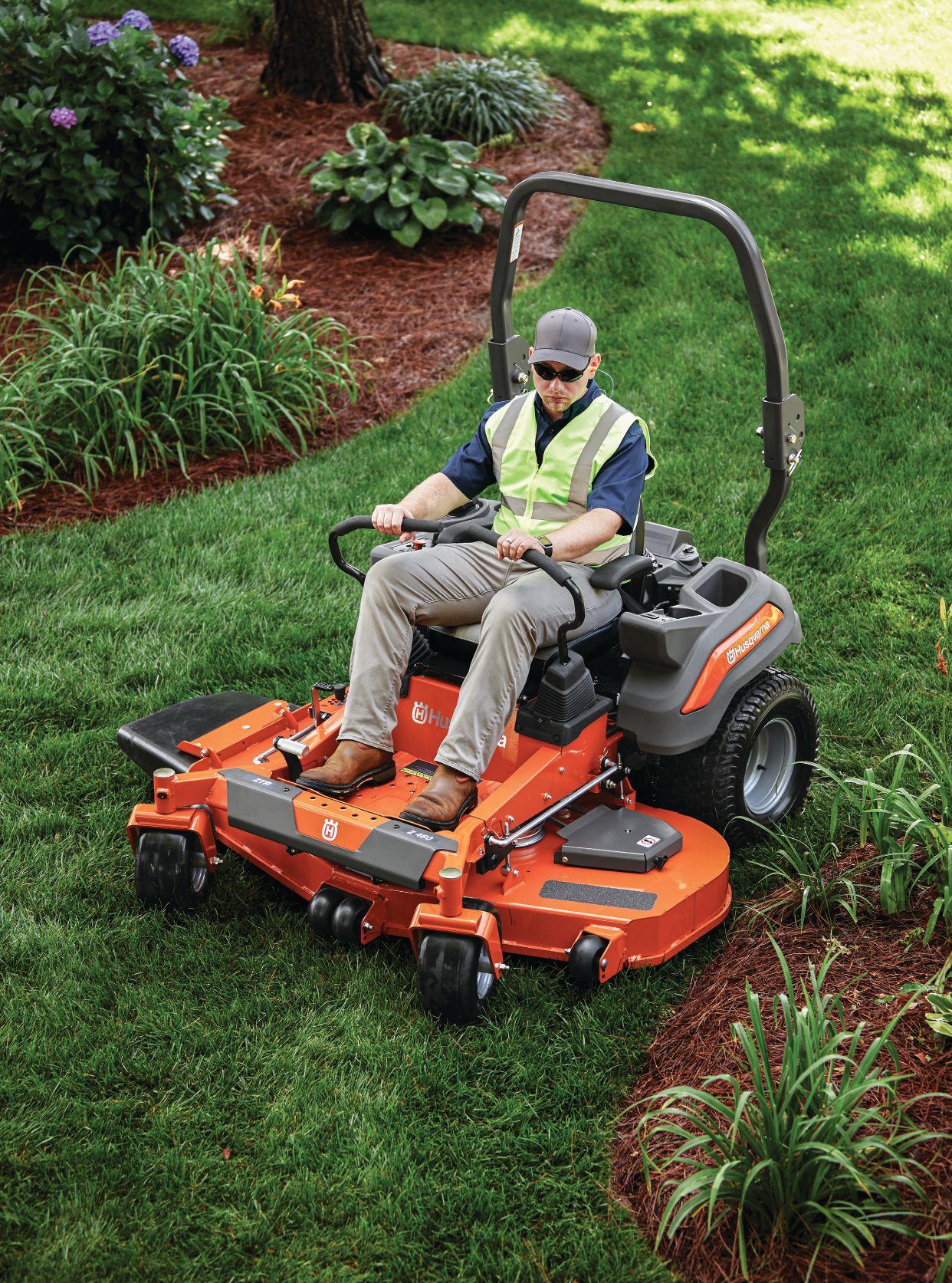
Four years or 750 hours
See a participating Husqvarna servicing dealer for details
Husqvarna’s Z400 series of professional zero-turn mowers is ready to deliver for your commercial operations. This highly productive and efficient lineup is designed for maximum performance and easy serviceability. From an optimal weight balance to the cutting-edge performance of the Parker HTE transmission, each mower in the Z400 series is ready to get the job done faster and more efficiently than ever before. HUSQVARNA.COM
Connect with HusqvarnaCA
Maximizes uptime
Ideal balance and traction
New, highperformance transmission
Vancouver Island’s oldest soccer club is looking to restore its facilities in time for the 2026 World Cup of Soccer – an event Canada will be co-hosting. A requisite task is to have the natural turf field meet FIFA standards. The Vic West soccer club is celebrating its 125th anniversary this year, and played its first game at Royal Athletic Park in 1908.
In addition to bringing the turf to standard, the goal is to have a capacity for at least 4,000 people – expandable to 12,000 for larger events.
TLC Landscaping in London, Ont. reports business remains brisk as another summer amid COVID-19 is soon to begin.
The company is a specialist in custom pools and landscape design, and reports business has increased 50 to 100 per cent since the onset of the pandemic.
The waiting time for a pool installation has resulted in customers asking for 2022 projects.
More Canadian baseball diamonds are benefiting from the financial backing of the Toronto Blue Jays’ charitable arm. The four diamonds at the Canadian Baseball Hall of Fame and Museum in St. Marys, Ont. are to receive upgrades to coincide with the anticipated start of the 2021 season.
Along with funding from St. Marys Minor Baseball and the town itself, a total of $93,000 is being earmarked for such improvements as irrigation, new bullpens, backstops and bleachers.
12,000
Expandable capacity for spectators

Ontario Premier Doug Ford’s announcement in mid-May wasn’t what the province’s golf courses wanted to hear. Hopeful that golf might be able to reopen – even if the stay-at-home order was extended another two weeks – the opposite happened. The lockdown was, in fact, extended until at least June 2, and golf courses have been included, again, in the order.
Golf courses in Ontario are becoming increasingly frustrated with each passing day of the lockdown as lost revenues in green fees are amounting to thousands of dollars daily. Yet, they’re pouring significant amounts of money into maintenance to ensure greens, tees and fairways don’t succumb to neglect.
$93,000
Total amount earmarked for improvements
It’s a burden that many courses are finding difficult to bear. This is certainly the case at the Sawmill Golf Course in Fenwick, where not only is golf not being played, but instructional, revenue-generating clinics are being canceled. The lack of golf has led to its staff complement of 30 reduced to six.
The Listowel Golf Club has been forced to trim its staff by twothirds for similar reasons.
The general manager at the Stratford Municipal Golf Course says he can’t fathom why some businesses are allowed to remain open while golf courses are shuttered, especially when data confirms no COVID-19 cases have originated from golf courses. While the premier says the potential for mobility is the reason for golf’s extended closure, National Golf Course Owners’ Association statistics suggest 85 per cent of all rounds played during the pandemic are taking place within 20 minutes of golfers’ homes.
Golf Ontario executive director Mike Kelly argues mobility is not an issue with golf, adding data from 2020 clearly shows golf is being played in the home communities of golfers.
He also noted medical professionals are suggesting golf and other outdoor recreational activities are healthy pursuits that are safe.
By Turf & Rec
U.K.-based golf course architectural firm Lobb & Partners has been retained to revitalize Waterton Lakes Golf Course in southwest Alberta.
The 99-year-old golf course is owned by Parks Canada. It originally opened as a nine-hole course and expanded to 18 holes in 1935. Through the 1950s, further improvements were made to the course through the guidance of Stanley Thompson, arguably Canada’s most famous golf course architect.
Waterton Lakes Golf Course is operated by Lakeland Golf Management, based in Winnipeg. The firm operates five courses in Manitoba and four in Saskatchewan. Parks Canada has awarded Waterton Lakes a 25-year lease to manage, operate, maintain and make capital improvements to the golf course.
“Lakeland Golf Management is excited to work with Lobb & Partners to help revitalize this historic course for visitors and locals to enjoy for generations,” Harry Brotchie, president, Lakeland Golf Management Inc., said.
Alex Hay, Lobb & Partners’ Canadian partner and design associate, said the firm’s approach to intelligent design and sustainability strives to maximize the positive impacts Waterton Lakes can have on its social and environmental surroundings.
“We believe when managed properly, golf courses provide many positive benefits to local environments and wider communities,” he said. “A sustainable approach was part of golf in the beginning and it must be part of golf in the future. We look forward to working with Lakeland Golf Management on this
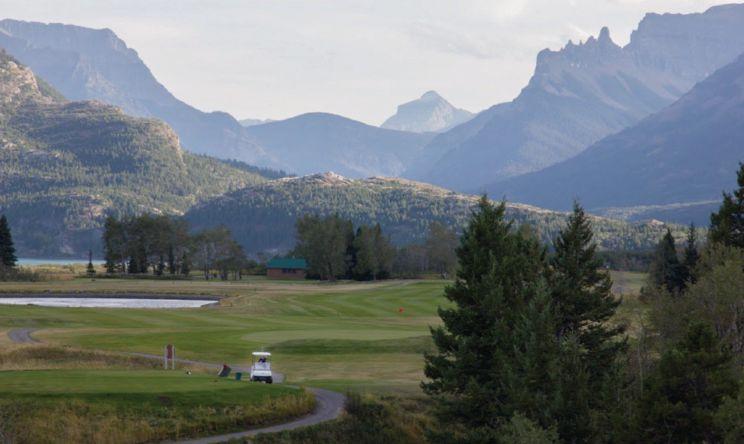
exciting project.”
“We believe when managed properly, golf courses provide many positive benefits”
As part of its contribution to this long-term project, Lobb & Partners recommends increasing the connection with the surrounding natural landscape and helping educate golfers on the importance of protecting and respecting the rare flora and fauna on the property.
Waterton Lakes Golf Course is home to such wildlife as deer, elk and moose. Occasionally, cougars and bears have been spotted roaming the grounds.
More than 1,400 forms of flora – many species of which aren’t found anywhere else in Alberta –also populate Waterton Lakes –“where the mountains meet the prairies.”
The golf course remains today an important attraction with Waterton Lakes National Park and is regarded as a strong community asset.
Both Lakeland Golf Management and Lobb & Partners wish to ensure the course is not just preserved, but enhanced, for future generations to enjoy.
In addition to this project, Lakeland Golf Management has entered into an agreement with Lobb & Partners to assist, as needed, with future review, planning and design solutions for other properties in its portfolio.
Lakeland Golf Management provides design, consulting, operational and management services for a wide range of golf courses. The firm is led by Harry Brotchie, a past president of the PGA of Canada and current president of the National Golf Course Owners Association of Canada.
Lobb & Partners is an international multi-discipline practice that provides comprehensive services for golf development, including golf course design and re-design. The firm was founded in 2016 by Tim Lobb, who has 25 years of experience working in the industry. In 2018, the firm expanded to Canada under the guidance of Alex Hay and Oliver Tubb. Lobb & Partners continues to grow globally and opened an office in South Korea in 2019.
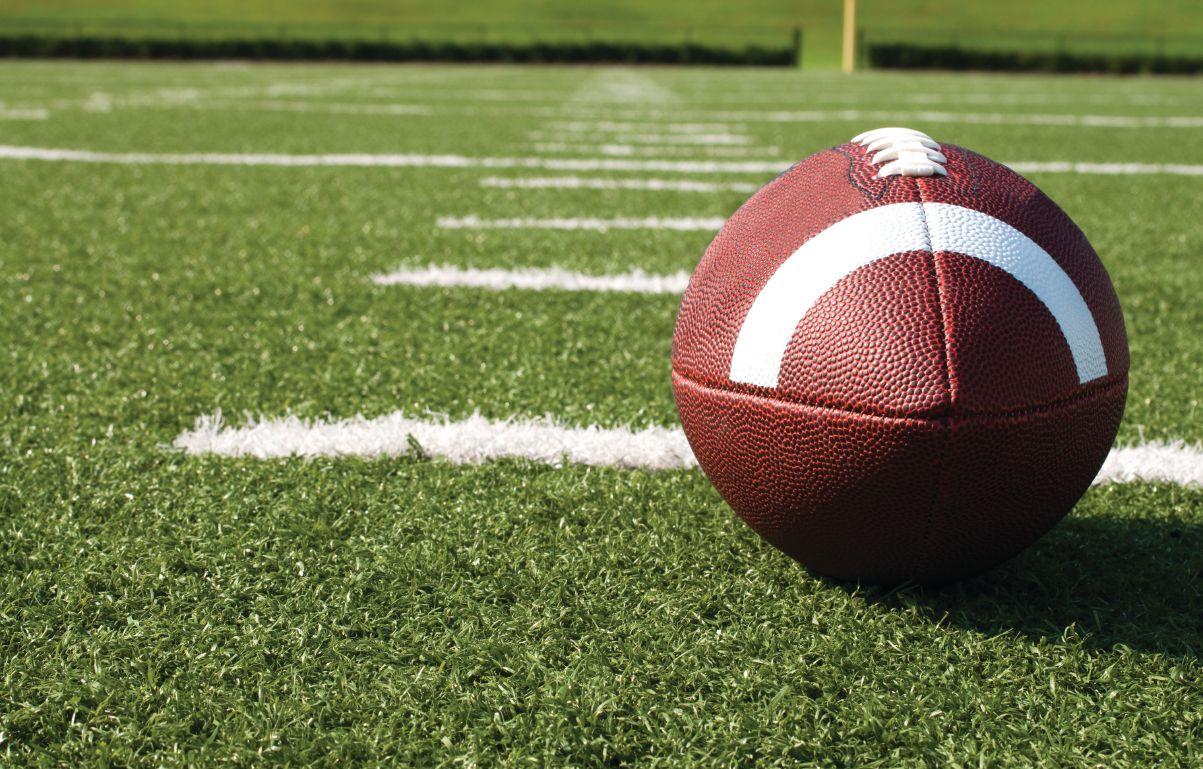
Project gives Woodstock, Ont. minor football group a reliable place to play. By Mike
Minor football players in Woodstock, Ont. are looking forward to playing on their brand new playing field once COVID-19 restrictions are relaxed. Up until now, the city’s minor football program didn’t have a field of its own, and it experienced difficulties in recent years to get field time from area high schools.
The football organization asked the city for a field it could call home, but the municipality’s inventory of land availability was limited. The only practical solution was to take an existing soccer field and convert it, in full, to accommodate football – a project that got underway in 2019.
Since nine soccer fields existed within Woodstock’s Cowan Park complex, it was felt a Category 3 field could be converted into a Category 1 multi-purpose field tailored for football. The $1.2-million cost estimate, however, seemed a little steep for the tax base of a city of 41,000 people.
Speaking in the winter at the virtually delivered Ontario Turfgrass Symposium, Chris Kern, supervisor of parks and forestry for the City of Woodstock, said costs could be cut significantly if the lion’s share of the work was done in-house.
When all costs were factored in, the price tag for the construction project came in at $578,000 – “a far cry” from the original estimate if the work been awarded to a general contractor.
The in-house budget approved by city council included:
• $113,000 for the removal of subsoil, machine rentals, irrigation, drainage, electrical conduit, and various materials and supplies
• $45,500 for a concrete and asphalt walkway, including labour and materials
• $47,200 for perimeter fencing
• $57,000 for premier football goalposts, premier soccer goals, netting, padding and rebar
• $3,400 for fertilizer and seed
• $312,000 for Musco LED lighting and the cost for it to be installed by an electrical contractor
Additionally, the city obtained a grant to pay for a GIS co-op student from London’s Fanshawe College.
“Our plan was to plow under everything on site within the field itself and perimeter sidelines,” City of Woodstock sports turf manager Trevor Warner said.
The site was about three feet too high at one end of the field, resulting in 30 to 34 inches being dropped from the north end through the centre of the field. Warner described the site as more of an open green space than a soccer field.
“We used our own City of Woodstock trucks and used a rental John Deere 544 loader on site,” he said. “We moved excess subsoil off the site into the parking lot and utilized all 1,100 yards of excess subsoil into the next soccer field.”















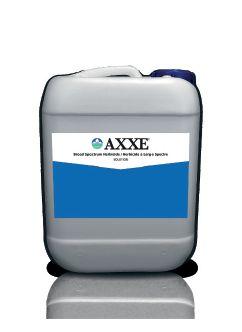
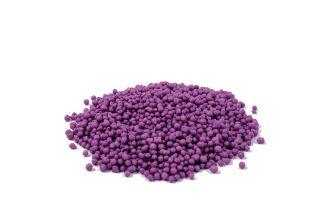



Screening of the soil was done by Whitehead Soils Ltd. of Norwich, Ont. Work began at the field’s south end and continued northward. Several large rocks were removed and screened from the native soil during the excavation process, which helped prevent potential damage to equipment and alleviate the chances of player injuries.
“This is why we screen,” Warner said. “It’s a better growing medium for the grass and a truer surface for the players with consistency.”
The city used its own lasers for grading accuracy to establish a one per cent slope, and city employees installed the field’s irrigation system themselves. The system was set with 2.5-inch lines running down the field’s sidelines, two feet away from the playing surface. Eight Rain Bird Eagle 950
rotor heads – four on each side of the field – were installed along the length of the field while four Eagle 700s – two at each end – delivered water “up the gut.” Warner said the system allows for the other heads to function normally if one develops a problem. The heads throw out about 60 gallons of water a minute with upwards of 95 feet of reach.
“It throws a ton of water in a short period of time, but it’s a beautiful rainfall coming down – just heavy droplets.”
The original plan didn’t include the addition of an irrigation system, but money was obtained up front to include it in the project.
“We’re hoping this irrigation system is used, but not as much as other typical irrigation systems are used.”
Because the field was a grow-in project, the availability of water ensured there was no death after seeding during a period

that was often hot and dry. Warner said it’s hoped the city can get away with irrigating deeply and slowly once a week from this point onward.
Electrical conduit was buried 3.5 feet below ground to power the field’s LED light fixtures. Under the supervision of a local electrical contractor, the work was done early on in the project to avoid having to tear up parts of the field later on. Additional conduit was installed to accommodate an electric scoreboard if future plans call for one.
Concrete was poured to provide a walkway into the field enclosure and to provide the base for a bleacher pad measuring 130 feet by 14 feet. A 14-foot gap separates two sets of bleachers, with an allowance of five feet in front to provide accessibility. Concrete was also used to help anchor both sets of “gooseneck” goalposts.
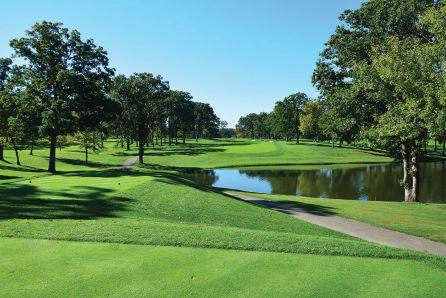
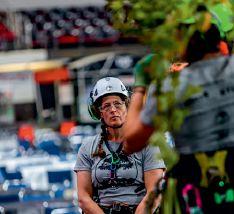


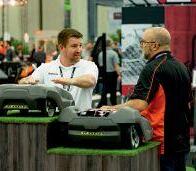
Warner said he felt confident the field could be seeded by the fall of 2019, but the installation of the irrigation system and electrical conduit – both of which weren’t included as part of the original field construction plans – added to the timeline. Waiting until the spring of 2020 to seed also allowed time to address issues associated with field settling.
Prior to seeding, the field was fertilized with Anuvia, followed by a 10-25-10 starter fertilizer the city typically uses during seeding and sodding projects. A 24-0-10 fertilizer was applied four weeks after the June 10 seeding, and Anuvia was put down again eight weeks after seeding. The 10-25-10 starter was applied prior to overseeding 10 weeks after June 10 while the 24-0-10 formulation went down 14 weeks after June 10.
The fertilizers – from Nutrite – were spread at a rate of 6.5 pounds per 1,000 square feet.
Warner said Barenbrug’s Rhizomatous Tall Fescue (RTF) became the preferred seed choice after he saw it growing in a plot at a U.S. trade show and was impressed with its attributes. He said he was never previously a fan of tall fescue, but added he didn’t like the tendency of Kentucky bluegrass to experience rust in late August and September when the Woodstock area was often targeted with storms and increased moisture levels. Municipalities must abide by the Ontario cosmetic pesticide ban –enacted in 2009 – and have limited control measures for rust.
“Being that this is a football field and we’re into the fall, I want this green grass a healthy grass. Healthy grass is safe grass. I wanted to go against the grain a bit and try
out this RTF.”
The RTF, coated with Yellowjacket technology, was seeded at a rate of seven pounds per 1,000 square feet over three passes. On Aug. 22, 2020, the same seed was applied at the same rate. A three-way mix of perennial ryegrass cultivars was put down on the sidelines. Warner said a nice colour contrast was realized between the field itself and its perimeter.
“As it tight-knit grows, it is a beautiful dark green colour,” he said of the RTF, acknowledging it requires less water than bluegrass. “If this type of grass allows a lot less water to be needed and can stay healthy and green, then, by all means, let’s try it.”
After the field was initially seeded, the area was hit by a torrential downpour, moving much of the seed.
The good news, however, was that the field’s drainage system worked admirably.
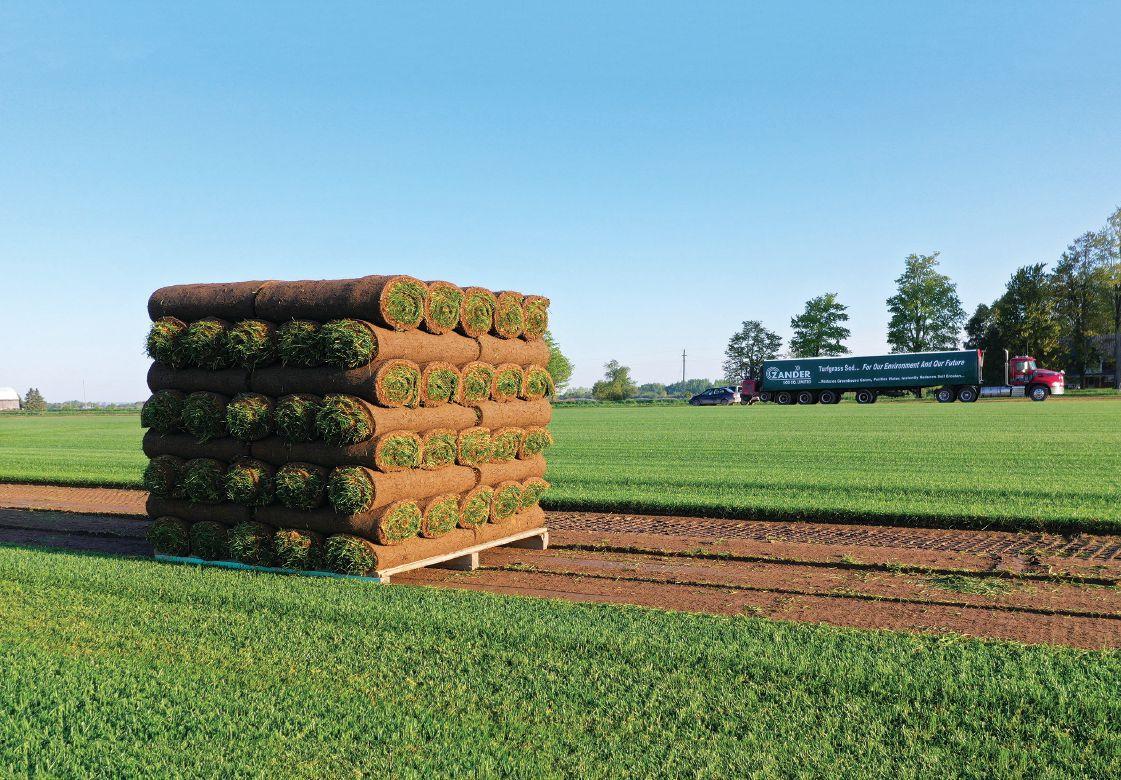


By Mike Jiggens
Not all lawns are alike.
It’s also true that there can be vast differences in certain areas within the same lawn. Roof overhangs, trees, reflective surfaces, confined spaces and the soil itself contribute to different microclimates within a lawn. To successfully manage a home lawn, lawn care professionals must be aware of how variances in air, light, humidity, water and soil can produce different microclimates, which affect turf quality.
Mike Van Beek, an instructor with the University of Guelph’s turfgrass management program, spoke at the Ontario Turfgrass Symposium about the step-bystep process in identifying and assessing specific microclimates and growing conditions on lawns that are managed by lawn care professionals. The symposium was presented during the winter in a virtual format due to the ongoing COVID-19 pandemic.
Even the smallest of yards can have a variance that produces a microclimate, he said. By definition, a microclimate is the climate of a small or restricted area, especially when it differs from the climate of the surrounding area.
Exposures associated with buildings, sheds, screens, fences and other structures can contribute to a microclimate.
“Each one of these particular exposures
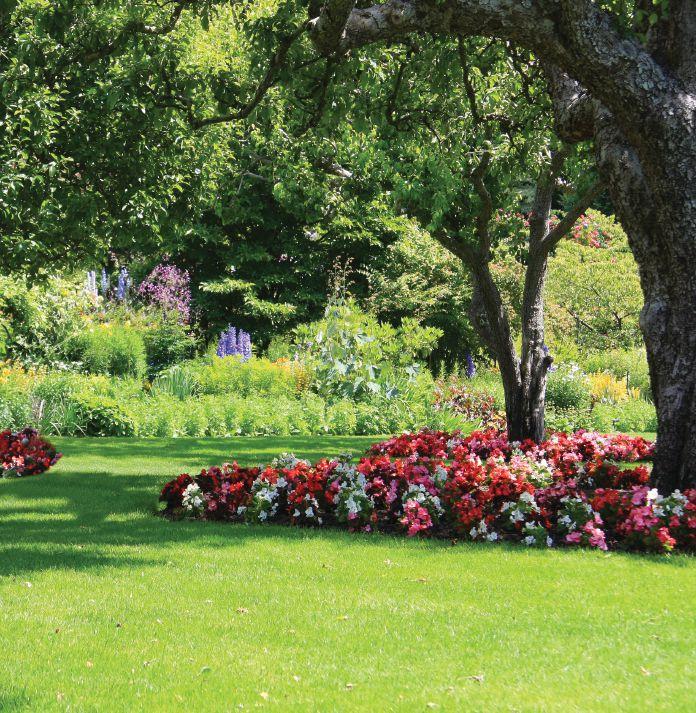
can have its own unique microclimate associated with it,” Van Beek said.
A southern exposure may get more sun versus that of a northern exposure, while an eastern exposure may get less wind than a western exposure. Each situation may have its own microclimate. The reflection of sunlight off of a surface and onto a lawn could cause a particular area to heat up more or warm up earlier in the spring, thereby creating a microclimate.
Little nooks and crannies on a property
may be protected from the wind, yet are exposed to the sun for longer periods, creating microclimates. Some homes have roof overhangs that reach out further than those of others, impacting the amount of moisture on the lawn directly beneath.
Trees and shrubs are among the most common contributors to microclimates, Van Beek said.
“As they get larger, they can impact the turf underneath by how much shade they
give, or if whether they get full sun or filtered sun down through the foliage. That can have an impact on the microclimate underneath the canopy of a tree of a shrub.”
Trees can also block wind, creating humidity concerns that could lead to peripheral pest problems.
Confined spaces tend to produce cool, moist and humid conditions. Trees growing in close proximity with each other can create microclimates that present a challenging growing environment for turfgrasses.
A shade canopy may not only reduce temperatures, but will block wind that could cause temperatures to increase. Trees and shrubs also compete against turfgrass for water and nutrients at their base.
The soil itself can create both microclimate and growing challenges, Van Beek said.
“Inconsistent textures and depth of topsoil can create little microclimates within the turf growing area.”
If soil inconsistencies are prevalent throughout a lawn, the resulting turf growth will be just as inconsistent, he said. This is especially common in new subdivisions, where topsoil is removed to allow construction to take place and then is pushed back in place, but often at varying depths.
Traffic patterns on lawns can lead to compaction and the creation of microclimates, affecting root growth and altering the quality of turf.
A lawn’s topography can have a bearing on microclimate creation. The ability to hold water may be compromised on slopes while hollowed depressions may hold rain for longer periods of time. Low spots can produce thin turf due to prolonged wetness after a rain event. The texture of the soil beneath may contribute toward reduced drainage. Heavy traffic in the area may also be causing compaction.
“These are creating little microclimates that could pose a problem for the turf.”
Van Beek suggested lawn care professionals conduct a site analysis upon arriving
at a customer’s property for the first time. They should perform a “big picture” analysis of the site and record a written inventory for future reference. Professionals should make note of all possible contributors to microclimate creation, such as
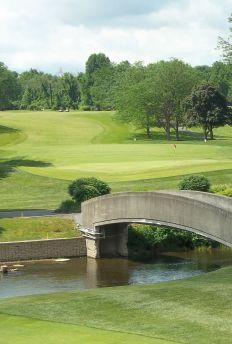
trees and topography. Taking photographs is also helpful, he said.
“Walk the property and evaluate the strengths and weaknesses of existing turf, available light and soil conditions. This information goes into the site analy-
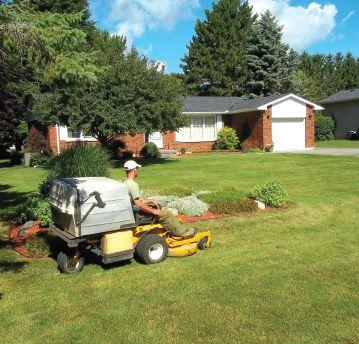
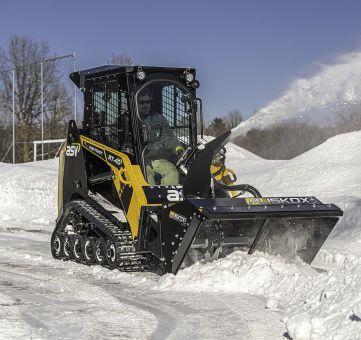

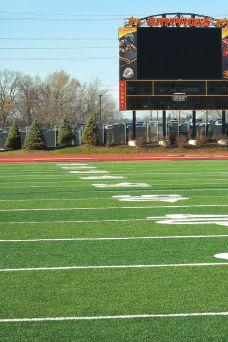
Turf & Rec will publish its annual Buyers Guide in its August/September 2021 issue. Our userfriendly directory allows decision-makers to find the equipment and products they need with ease, no matter where in Canada they are located. Don’t miss out on having your company listed in this comprehensive guide to the products and services for the Canadian turf and grounds maintenance markets.
Visit one of these participating Exmark Dealers to learn more about the full line of professional Exmark models.
ALBERTA
CALGARY
DRAYTON VALLEY
EDMONTON
EDMONTON
RED DEER
ALBERTA FOREST & GARDEN
HORIZON FOREST AND GARDEN LTD ...
ALBERTA SMALL ENGINE
EDGE EQUIPMENT LTD
FUTURE AG INC
BRITISH COLUMBIA
ABBOTSFORD
CAMPBELL RIVER
CHILLIWACK
COURTENAY
KAMLOOPS
KELOWNA
SURREY
SURREY
ALTONA
HEADINGLY
WINNIPEG
FORESHORE EQUIPMENT AND SUPPLY
C & L SUPPLY (1988) LTD
CHILLIWACK OUTDOOR POWER EQUIP
PILON TOOL RENTALS 1972 ..........
B & L SMALL MOTORS LTD...........
SAVOY EQUIPMENT
ARCOM POWER EQUIPMENT INC
FRASER VALLEY EQUIPMENT LTD
ALTONA FARM SERVICE LTD
HEPBURN ENTERPRISES INC .........
ABC POWER TOOLS ................
IRISHTOWN
ARVA
AYR
BARRIE
BRADFORD
BRAMPTON
BRANTFORD
BRODHAGEN
BURLINGTON
CHATHAM
CHESLEY
CREEMORE
DRESDEN
ELMIRA
EMERYVILLE
EXETER
FERGUS
HAMILTON
HANOVER
MILLBANK
MISSISSAUGA
MITCHELL
MOUNT FOREST
NORTH YORK
PETERBOROUGH
SCARBOROUGH
SUDBURY
VARS
WINDSOR
SMALL ENGINE HOSPITAL
HURON TRACTOR LTD
AYR TURF & TRAC LTD
MERCER EQUIPMENT INC.
BRADFORD RENTAL SALES & SERVCE ..
GREEN TRACTORS INC
BOBCAT OF BRANTFORD INC
B & K TIRE AND BATTERY
B.R. DICKSON EQUIPMENT INC .......
CHATHAM OUTDOOR POWER
BRUCE SERVICE SALES & RENTALS
MAPLE VALLEY SALES & SERVICE
DNR OUTDOOR POWER EQUIPMENT ...
MARTIN’S SMALL ENGINES LTD .......
CAMPEAU OUTDOOR POWER EQUIP.
HURON TRACTOR LTD
A.S.E. EQUIPMENT & CARTWORLD .....
OUTDOOR SUPPLIES & EQUIPMENT ....
BRUCE SERVICE SALES & RENTALS
ZEHR’S SALES & MANUFACTURING
WPE LANDSCAPE EQUIPMENT
W.E. ENTERPRISES LTD .............
MITCHELL CYCLE INC
BROADLINE EQUIPMENT LTD
PRICELESS PRODUCTS LANDSCAPE
M.C. POWER SPORT ................
MCGILL EQUIPMENT................
SUDBURY SMALL ENGINE
HURON TRACTOR LTD
M.R. BLAIS SALES & SERVICE INC .....
VEHICLE VENTURE .................
403-248-0878
780-542-4446
780-944-9559
780-455-3343
403-343-6101
604-744-0547
250-287-9231
604-792-4410
250-338-5361
250-376-0033
250-868-1010
604-533-0081
604-590-1433
204-324-5523
204-889-3392
204-224-1760
506-854-2807
519-666-2300
519-632-9901
705-503-3535
905-775-7101
905-846-2511
519-752-7900
519-345-2248
905-331-5040
519-354-3990
519-363-6345
705-466-3138
519-683-6963
519-669-2884
519-727-5031
519-285-3845
519-820-9708
905-578-2411
519-364-6345
519-595-7579
905-569-2055
905-629-1424
519-348-0490
519-323-3591
416-410-2158
705-748-5189
416-751-4455
705-564-9772
519-285-3845
613-443-1230
519-966-8642
sis. With that, you come up with the remedies and solutions for the concerned areas on the property, and that will help you develop the program you want to implement for that site.”
Van Beek said lawn care professionals need to be able to identify the more common grasses found in a standard lawn, including Kentucky bluegrass, perennial ryegrass, fine fescues, tall fescue, annual bluegrass and perhaps some native bentgrasses. Once the grass types have been noted, the approximate percentage of each and their location on the lawn should be documented.
Changes in the percentages of different grasses could be a reflection of the soil type. Different microclimates may have an impact on the grass types growing in these spaces, he said.
Once the various grass species have been identified, the species most desirable for the site should be promoted, Van Beek said. A composite of different grass types might exist, but they should be ones that perform well under circumstances associated with their particular microclimates.
Broadleaf and grassy weeds, including dandelions, plantain and clover, also need to be identified as well as the time of the season they are prevalent. The percentage of the lawn they occupy should be assessed, he said, and the homeowner should be consulted to determine an acceptable threshold.
“Is the client tolerant of a small percentage of broadleaf weeds? Do you slowly try to outcompete them with a good offence of healthy lawn grass, or does the client want them eliminated immediately? Are the broadleaf weeds localized or are they located throughout the entire lawn? If they are localized and there are only small pockets, is there a correlation to microclimates that might be causing these concerns?”
Van Beek said the density of the turf stand requires analysis. Thin stands could be the result of microclimate variations. He suggested soil conditions need evaluation. By digging into the soil, the depth of topsoil will be determined. If a healthy base isn’t present, it could be a contributor to poor turf quality. The soil’s texture can help with a diagnosis. Clay can contribute to a compacted soil while sand could challenge the ability to keep the soil wet.
“Being able to look at the soil and evaluate what’s under the turf will go a long way to help you diagnose whether a microclimate of soil concerns is helping your turf or contributing to some of the concerns you see.”
Taking soil samples and having them analyzed by a lab will determine if there are nutrient deficiencies. Such information will help lawn care professionals customize their fertility programs. Surface drainage issues may be addressed by building up low spots. Shade issues may require pruning the lower limbs of trees or thinning them out to promote more sunlight.
Van Beek said even the best-quality turf and soil will be impacted by drought that could last for several weeks.
“If you can see greenery at the base of the plant, there’s a good chance the plant is still alive and dormant.”
If the turf is “crunchy” underfoot, however, and it’s evident that it’s crumbling away at its base, chances are it’s dead, Van Beek said.
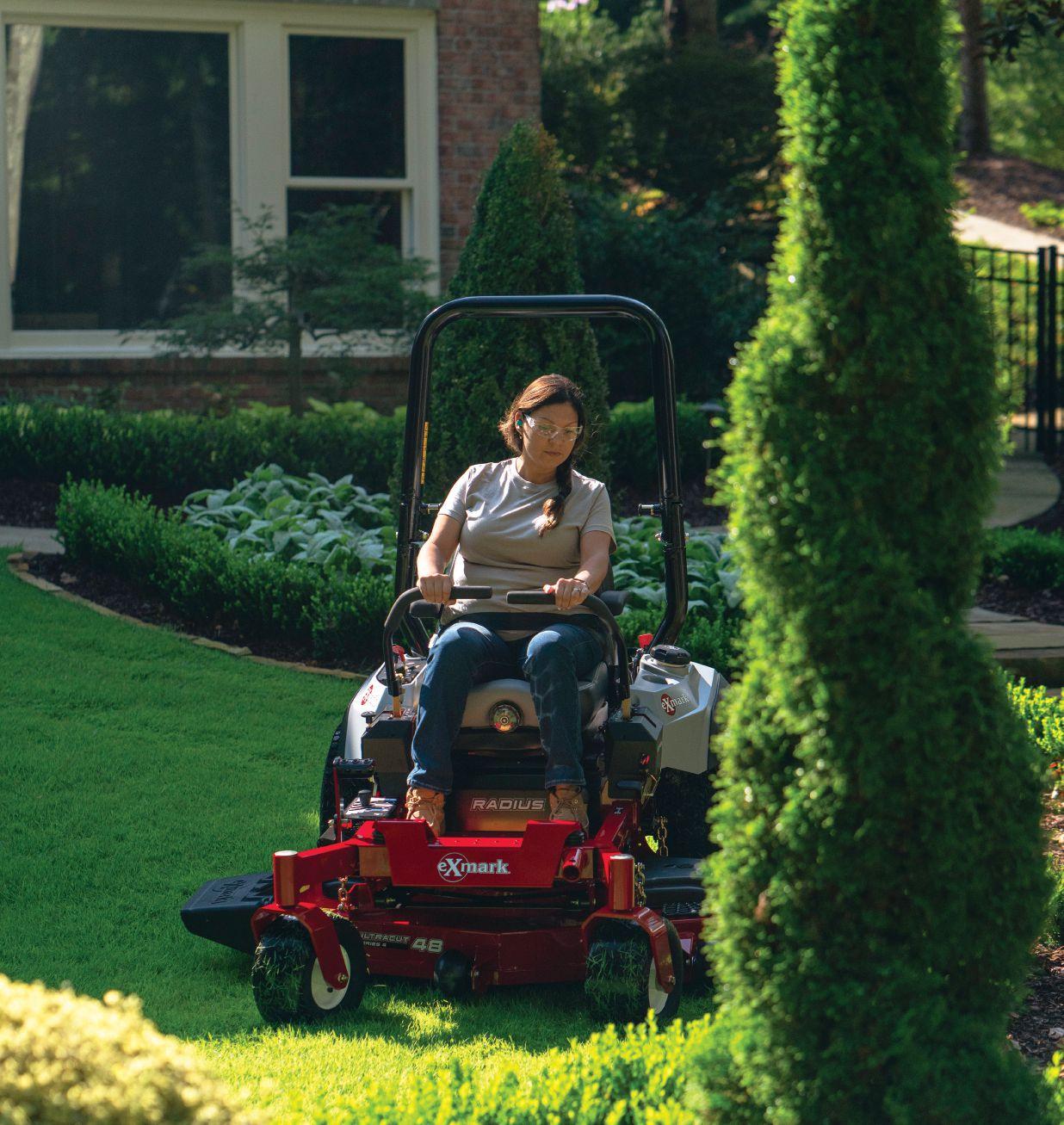
At Exmark, we know living happens outdoors and your time is valuable. No matter which model you choose, you can trust that all our Exmark commercial zero-turn riders will get you on and off the lawn more quickly. Equipped with the signature Exmark features that landscape pros prefer –you can spend less time mowing and more time doing the things you love. Stop by your local dealer today – or visit Exmark.com to experience Exmark and learn more about the brand that the pros choose!

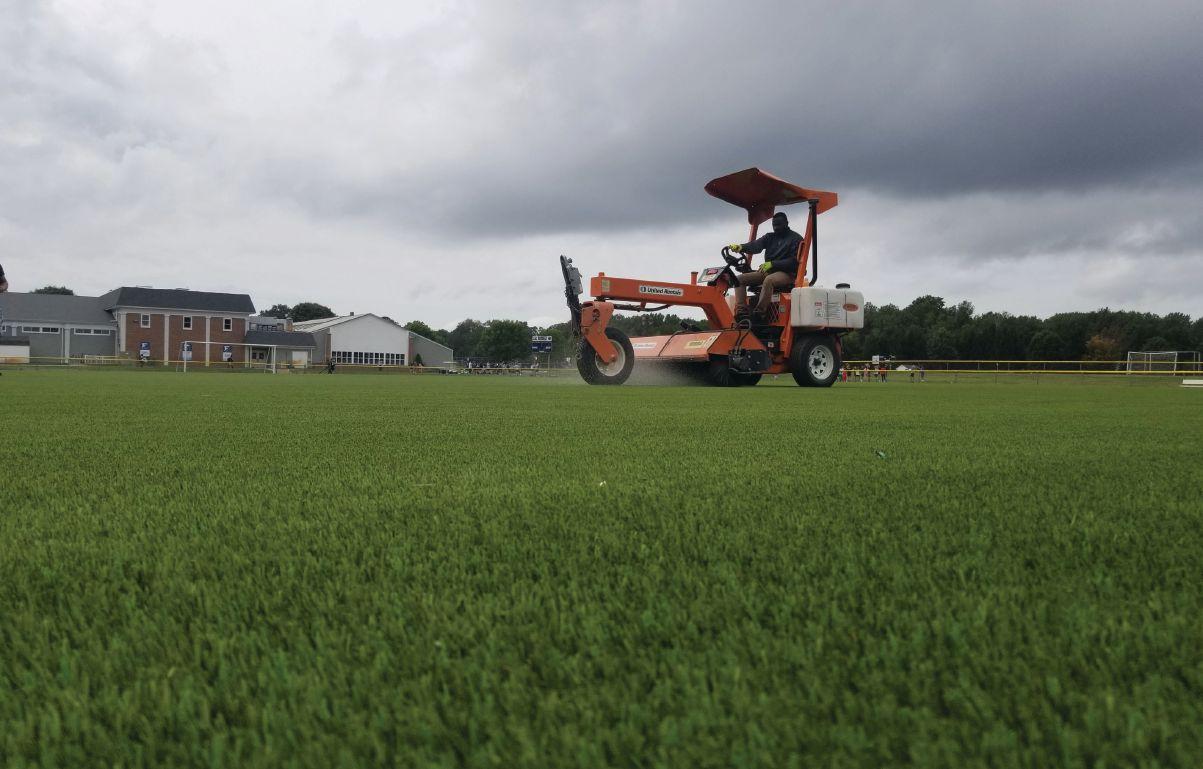
Synthetic turf is not maintenance-free, and here’s how to care for it. By
Paul Adams
As the spring and summer sports seasons start back up and turf fields begin to see more activity, it is important that facility managers are maintaining the care of their synthetic turf fields.
Follow these simple suggestions from Elite Turf USA, a leading synthetic turf provider, on how to properly maintain the health and durability of your turf field and significantly extend its life and performance.
To effectively protect synthetic turf fields, it is important to keep them clean. The first step is to follow these maintenance suggestions to preserve its surface:
• Control access to the field to minimize mud/dirt tracking on field
• Keep the surface free of litter, mud, and debris
• Provide ample garbage and recycling receptacles
• Post signs prohibiting smoking and carrying food or drink onto the field
• Properly monitor the use of motorized vehicles on the field
• Discourage the use of chewing tobacco, gum, and sunflower seeds
• Monitor field for damage and repair promptly
• Follow suggested maintenance and cleaning procedures provided by your turf supplier
No, synthetic turf is not alive, however, it still requires hydration in order to cool down before evaporation takes place. For turf fields that are outside, rain is the best cleanser as it gently cleans the fibres of dust, pollen, and airborne particles in a way that is difficult to duplicate manually. For indoor fields or fields that may be in areas where rainfall is scarce, an occasional watering is beneficial to cleanse the synthetic surface.
Remove all litter, debris, and even the particles you cannot see
Daily care is truly ongoing care. The amount of activity the turf receives will determine the amount of upkeep that is needed. For light trash (paper, peanut shells, sunflower seeds, athletic tape, etc.) and airborne dust, you can easily remove them through various instruments. For non-infilled systems, trash can be removed easily with a lawn sweeper, maintenance sweeper, or a motorized vacuum. For infilled systems, the best tool to clean the field is a shop vacuum, and be sure to angle the hose so the infilled material does not get vacuumed along with the debris. Vacuum cleaners are not recommended to remove mud.
Keeping up with the maintenance of synthetic turf may require the use of various tools and machines. There are several points to keep in mind when using equipment:
Sweepers. The sweepers of your machines should have synthetic fibre bristles such as nylon or polypropylene. Double check the brush does not contain any metal or wire as metal fibres can become loose and cause injuries to players, and can damage the surface of the field. The length of the brush should be a minimum length of 2.5 inches and maximum 0.030 inches.
Brushes. For best results, the brush should be set so that it barely is touching the tips of the turf’s fibres. If the brush is set too low and is digging into the turf fibre pile or backing, it can damage the turf. The brush setting is different, depending on the model and type of sweeper, and should be monitored frequently.
Temperature limitations. Never use a motorized vacuum sweeper during the heat of the day if the ambient temperature exceeds 90 degrees Fahrenheit.
Weight limitations. Any sweepers that weigh more than 300 pounds should have pneumatic tires with a maximum tire pressure of 35 pounds per square inch. Do not park vehicles on the turf, especially in peak hours of the day when heat is greater or when turf is wet for long periods of time.
Exhaust fumes. When operating machinery on indoor turf fields, we recommend using electric or propane-powered equipment. For outdoor fields, the type of fuel or power used is not as important, however, if the machine has an internal combustion engine, make certain that the hot engine exhaust is not discharged down towards the playing surface. Ensure that the sweeper is designed in such a way that the hot muffler or exhaust pipe cannot drop directly onto the surface.
Spillage. Make sure that while sweeping, there is no dripping, leaking, or spilling of lubricating oil, grease, transmission fluids, etc. on the turf’s surface. Spills of such liquids can discolour the turf and damage the fibres and backing. Do not change or add fluids to maintenance equipment while on the field.
You may ask, how often should I be performing these maintenance tasks? The
frequency depends on the quality and use of your turf field. The removal of loose rubbish and surface dust should be performed on an as-needed basis, however, generally we suggest conducting maintenance about once a week, depending on
the usage of your field. Your field will perform, look, and feel better for an extended period of time if you follow set maintenance protocols.
Paul Adams is vice-president of sales and marketing for Elite Turf USA.
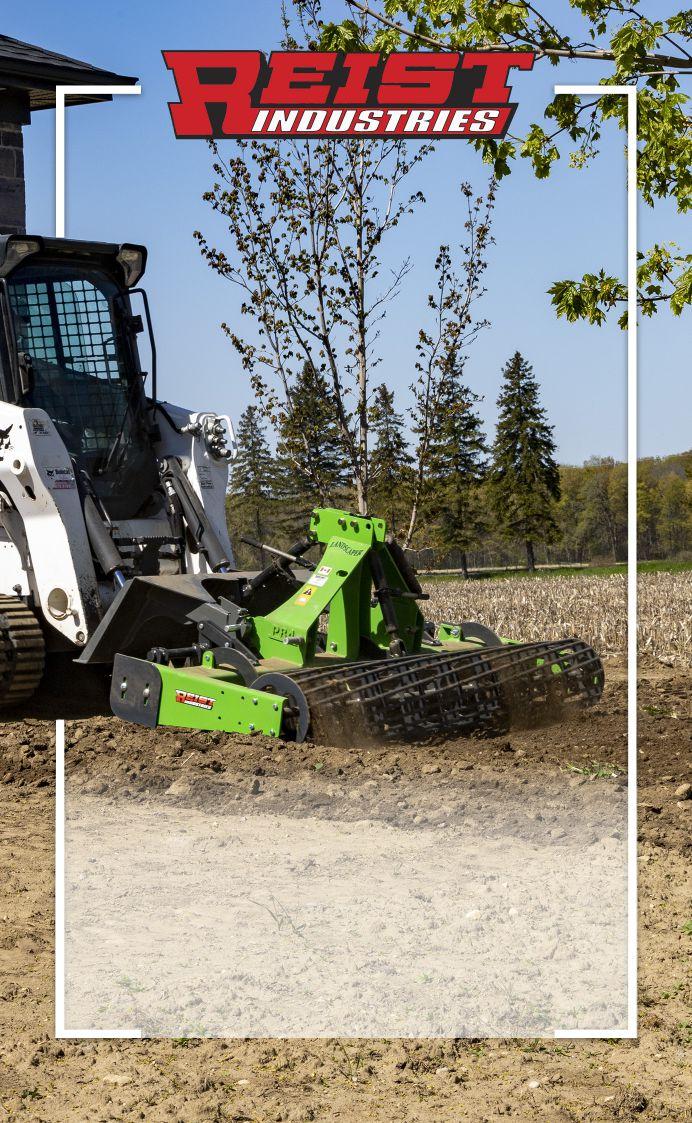
More consistent surface, better drainage among its attributes.
By Jim Thomas
Apopular way of improving the playability and performance of turf on golf courses is by sand capping the tees, fairways and even the roughs. The effectiveness of sand capping has been proven. However, achieving a result is only possible when all parameters have been well established and are monitored regularly.
Sand capping – the art of adding several inches of sand or a high-sand mix to improve the turf growing conditions by increasing the drainage of the surface –has really gained momentum since the start of this century. It has proven to deliver a more consistent surface with a rapid drainage capability that remains firm, even in wet conditions.
Once finished, the turf is more resistant to compaction. Sand capping can also eliminate certain problems associated with turf growth in poor soils, as well as create a more conducive growing medium.
The practice does not always get the recognition it deserves – the reason being that in most instances, the effect of sand
capping is limited, due to incorrect decisions. In an attempt to reduce construction cost, architects or owners of golf courses do not always respect the ideal depths of the sand layer that is added.
While adding too thin a layer of sand saves costs, it may result in wet conditions and poor soil aeration, which may limit turf growth and health. Another reason is because the drainage capacity of the surface and health of the turf is, ultimately, determined by a complex mixture of conditions and circumstances.
The effect of sand capping can often be most striking when reclaimed water is used to water the turf. Reclaimed water generally contains elevated levels of bicarbonates, carbonates, salts, sodium and other materials that can adversely affect turf health, either directly or indirectly.
For that reason, good knowledge and understanding of the local conditions is required before it can be decided which quality and what quantity of sand should be added.
Using the incorrect sand can affect both the drainage capacity and water retention ability of the soil. Important characteristics for the sand to have are the correct particle size, water retention characteristics and angularity.
A soil laboratory can help in identifying suitable sands that perhaps can be expensive, but will deliver better performance
“Sand capping can only be as effective if the root system of the grass v root deeply and extensively.”

while using a lower quantity. The soil laboratory can help understanding of the sand characteristics and local conditions which are essential to make a difference.
Sand capping can only be as effective if the root system of the grass can root deeply and extensively. Only when this has been tested and established by a soil testing laboratory is it possible to determine how much sand should be added. A perfect depth will deliver the optimal balance of water-to-air-filled porosity.
This will generate the optimum growing conditions for the turf. At present, the United States Golf Association (USGA) doesn’t have specifications for sand-based construction directly atop existing soil. However, studies have shown that the root mass detected within the underlying subsoil can be inversely proportional to sand-cap depth.








target-specialty.ca |
Mitch Davidson
Southern Alberta, Kootenays mitch.davidson@target-specialty.com 587.223.2083
Jason Hooper
Lower Mainland & Interior Bc jason.hooper@target-specialty.com
604.317.2476
Chris Paterson
Southern Alberta & Kootenays chris.paterson@target-specialty.com 403.540.0157
Eric Gratopp Northern Alberta eric.gratopp@target-specialty.com 587.284.4744
Gregor Kowalski
Vancouver Island gregor.kowalski@target-specialty.com 250.686.3909
Josh Seibel Saskatchewan & Manitoba josh.seibe@target-specialty.com 306.861.8296
Mark Scenna Sales Manager, Canada mark.scenna@target-specialty • 416.458.2396
Atlantic Provinces Irri Plus Inc. (902) 405-4774
Quebec
Central Irrigation Supply
Ville St. Laurent, QC (514) 788-5884
Dubois Agrinovation Saint-Remi, QC (800) 815-9929
Site One Landscape Supply
Ville St. Laurent, QC (514) 913-6719
Ontario
Central Irrigation Supply
Mississauga, ON (5 locations) (905) 795-8088
Site One Landscape Supply Concord, ON (5 locations) (800) 347-4272
Vanden Bussche Irrigation Delhi, ON (3 locations) (800) 263-4112
Manitoba
Consolidated Supply
Winnipeg, MB (204) 632-7643
Site One Landscape Supply Winnipeg, MB (204) 694-9442
Saskatchewan
Saskatchewan Consolidated Supply
Saskatoon, SK (306) 653-5444
Site One Landscape Supply Saskatoon, SK (306) 931-2440
Alberta
Consolidated Supply
Calgary, AB (403) 203-7550
Corix Water Products Calgary, AB (5 locations in AB) (800) 242-3176 Emco Calgary, AB (403) 278-1470
Site One Landscape Supply (2 locations in AB) (403) 236-0102
British Columbia
Andrew Sheret Ltd. (24 locations in BC) (250) 386-7744
Consolidated Supply Kelowna BC (250) 863-8291
Corix Water Products Langley, BC (11 locations in BC) (800) 667-2445
Site One Landscape Supply (4 locations in BC) (250) 544-0401
Van-Kel/EMCO Corporation (8 locations in BC) (800) 667-8825
Vancouver Irrigation Supply
Vancouver, BC (604) 251-2258 (4 locations)
Wes-Tech Irrigation Systems Victoria, BC (250) 361-1573
Rain Bird International Inc. www.rainbird.com/ca
If too much sand is applied to the turf, the grass roots will concentrate in the new sand layer. Sand used for sand capping doesn’t always have the nutrients a good root system prefers. Particularly in periods of drought or limited access to water, this sand could negatively affect the grass’ natural abilities of surviving and recovering from these conditions.
Once the sand has been added, it is likely that maintenance practices will have to be adjusted. Effort must be made to avoid the accumulation of organic matter. An effective maintenance regime includes a combination of aeration, topdressing, verticutting and grooming.
These maintenance activities will help prevent the thatch layer from retaining excess water, which can result in a very poor growing environment. The thatch layer can also obstruct the water from moving more deeply into the soil profile, which can result in excessively dry soil beneath the layer.
When the majority of the root system is confined to the thatch layer, this will result in a grass plant that is far more sus-
ceptible to disease, insects and other stresses. Meanwhile, starving the soil of moisture and nutrients could result in lasting damage to turf.
The practice of sand capping is one that, to be successful, needs to be done carefully, and the response of the grass needs to be closely observed. Only when the existing conditions have been determined by a soil laboratory, and the knowledge obtained is used to produce a roadmap for the condition of the turf that is aspired to in the future, will it be useful to sand cap in that area.
Jim Thomas is owner of Thomas Turf Services, in College Station, Texas, a soil analysis and turf management company with clients worldwide. It was the second laboratory to be accredited by the American Association for Laboratory Accreditation, for the geotechnical evaluation of putting green materials. In 2019, the company joined the Labosport group of companies – a leader in the testing of both natural and synthetic turf surfaces. Being part of Labosport International entitles Thomas Turf Services to draw from and contribute to experiences and expertise for the building and maintenance of quality turf facilities.

Sports turf managers can’t control temperatures, but they can control how they manage turf in hot weather.
By Boyd Montgomery
In the summertime, when the weather is hot, drought, heat and disease unite to wreak havoc on sports fields everywhere. As temperatures rise and dry conditions set in, sports turf managers can count on increased stress on cool season grasses.
While you can’t control the temperature, you can control how you maintain your athletic field surfaces to minimize summer stress. Read on to discover the impact of heat stress and how you can encourage turf health in hot weather.
Cool season turfgrasses are happiest when soil temperatures are between 50 and 65 degrees Fahrenheit and daytime temperatures stay within 60 to 75 degrees Fahrenheit. But, when temperatures start to rise and soil temperatures increase, heat builds up in the turfgrass and creates stressful conditions.
Root systems are vital to the water and nutrient uptake of the turfgrass, and their growth is particularly impacted by rising summer temperatures. Well before you’ll see the visible effects of turf heat stress, root growth decline will be taking place below the surface. Add the foot traffic common to any athletic field
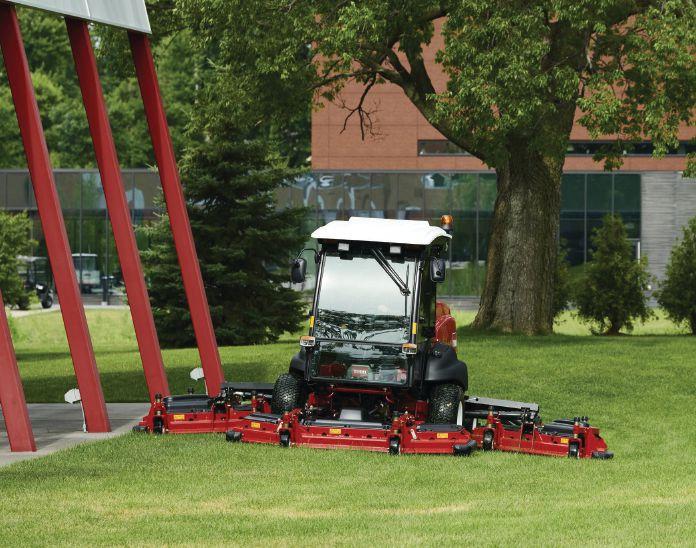
in the summer, and you could quickly be dealing with serious issues.
In addition to summer stress, your turf may experience heat-induced dormancy. When cool season grasses are exposed to long periods of high temps and low moisture, they will stop growing and turn brown. Don’t worry, the plants aren’t a total loss – when daytime temperatures drop down in the fall, moisture will return, and growth will start again. To ensure dormancy is reversed, continue to lightly and frequently irrigate in the summer months to prevent irreversible damage.
It’s always smart to reduce traffic on any turf experiencing heat stress or dormancy to avoid added injury. Don’t drive mowers on a dormant field, and limit foot traffic on stressed turf, if possible.
To mitigate heat stress, ensure your turf is irrigated with at least one inch of water per week. Watering should occur in the mornings, when temperatures and evaporation rates are lower. Pay attention to particularly hot stretches of weather – extreme heat will cause evaporation rates to increase, which will need to be countered by increased irrigation frequency.
Be careful of overwatering, however, as too much water can sometimes be worse than too little. Remember that shaded turf requires nearly half as much water as grass that receives full sun. For best irrigation results, pay close attention to soil moisture levels and keep a solid record book. Staying alert to the conditions of your turf will help you maintain the correct soil moisture and combat stress.
In the height of the summer months, re-evaluate your mowing schedule. Don’t mow when temperatures are high in the middle of the afternoon, and reduce mowing frequencies wherever possible. If the schedule of play allows it, you may even consider skipping a mowing interval altogether.
Also consider increasing your cut height to help protect turf from stress and encourage growth. Taller turf can also help keep soil temperatures lower at the surface. Keep in mind that a clean cut is essential to the health of your turfgrass, so ensure your mower blades are always sharp. Mowers that feature high-strength steel blades will help you achieve that clean, high-quality cut.
Keeping an eye on the condition of your turf means more than just maintaining proper soil moisture. You should also be monitoring your soil fertility levels, as proper fertilization will help turf fight back against high temperatures. A simple soil test will tell you if you’re in good shape, or if you need to explore increasing or supplementing your fertilization process.
When evaluating your fertilization needs in the beginning of the summer season, remember that an even application is key to maximizing nutrient absorption. Use a turf sprayer which offers exceptional spray accuracy and delivers a consistent, even spray across the turf for optimal fertilization consumption.
While most turf damage will be obvious in the summer, insect damage and disease may be disguised in brown or wilted blades. Be sure to frequently inspect for insects and symptoms of disease and treat any infestations or issues accordingly.
Finally, keep an eye out for weeds, which will compete with your turfgrass plants and make it more difficult for them to stand up to increased stress. Eliminating unwanted weeds immediately increases the moisture and nutrients available to your turf.

Deere 333G
and reaches farther than its predecessors, with a refined vertical-lift loader design that makes for faster more efficient loading. It also serves up substantially greater pushing power and bucket breakout forces to carve out clay, power through piles, and handle heavy loads with ease.
Now that we’ve covered how to manage heat stress this summer, don’t wait to look ahead to next year. Encouraging root growth with topdressing and aeration in the spring will help guard against summer stress. Another easy trick to develop strong root systems is raising mower blade heights, as longer blades have deeper root systems for increased water and nutrient uptake.
In some instances, you may also want to consider putting turf through drought conditions with deficit irrigation in the springtime, so the turfgrass plants are preconditioned. This approach facilitates deep rooting as well as water retention.
Though you can’t control the weather, a good preparation plan in the spring and a smart maintenance response in the summer will ensure healthy turfgrasses capable of surviving the summer season.
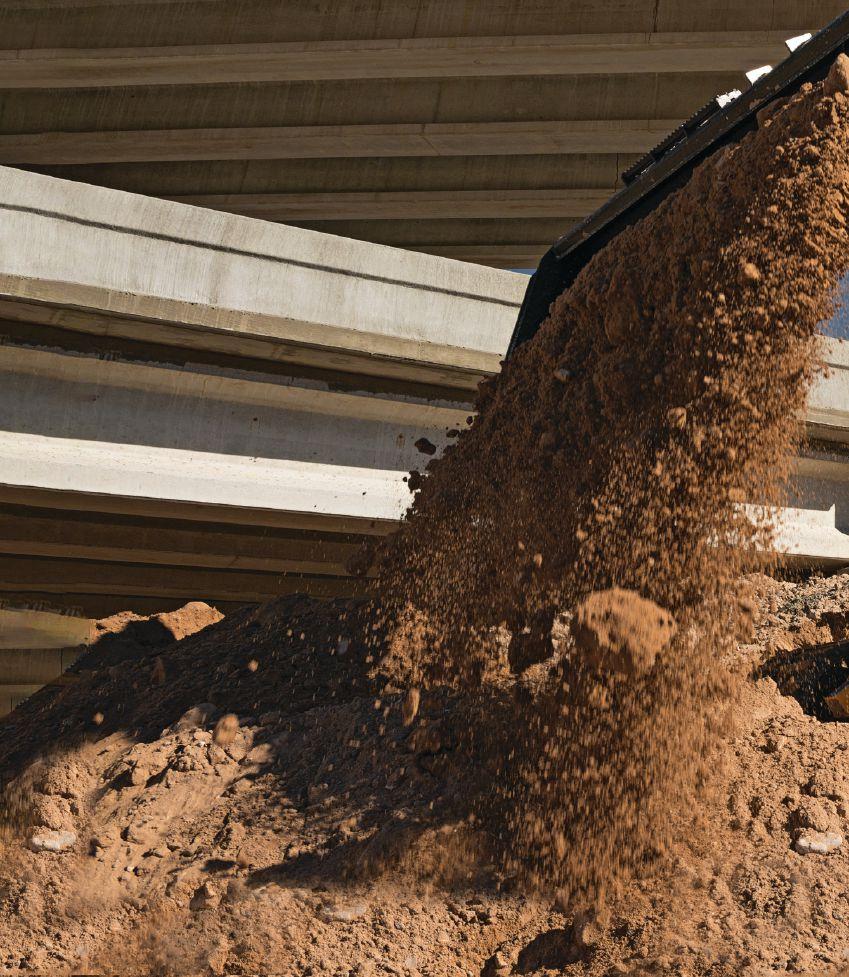
By Mike Jiggens
An Oakbank, Man. pharmacist has come up with a novel idea for safely mowing around such sensitive lawn features as flower gardens and shrubs. It’s a simple device that acts as “a third arm” to gently move overhanging flora and other obstacles from a mower’s path.
Called “the Lawnmower Fender,” the patent-pending device is affixed to the side of a mower’s cutting deck, extending beyond its front wheels, and lifts overhanging stems and branches to enable the mower to cut the adjacent grass without damaging other vegetation or obstacles.
Rob Sitarz said the concept can be attributed to his late father, who originally tinkered with the idea about 40 year ago. The current prototype has since been perfected and can easily be mounted using only a 7/16th-inch wrench.
“It’s not just a better mouse trap,” Sitarz said. “This is something totally different, and there’s nothing like that out there.”
For now, his prototype has been fabricated for use on consumer walk-behind mowers, but he said it has the capability of being adapted for commercial mowers as well.
“Having that attachment on the side of a zero-turn radius mower or a stand-on one can certainly be adapted and used on those as well.”
Sitarz recalled that as a child, his mother’s flowers
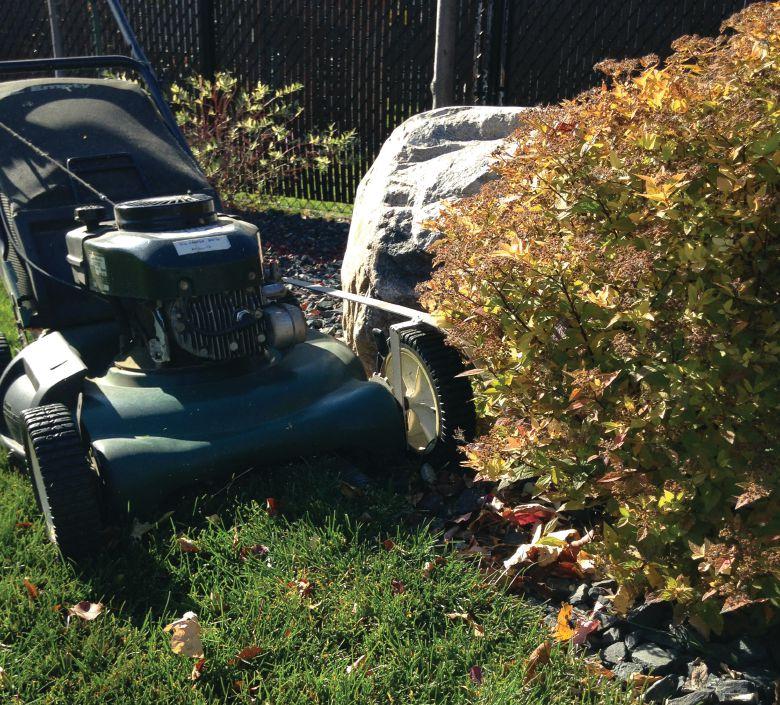
and shrubs were frequently run over by the family’s mower. His mechanically-inclined father conceived a solution, and the first-generation Lawnmower Fender was born. The original model, however, required a mower’s wheels to be removed first before the device could be mounted. No longer must anything be removed prior to mounting, and the universal apparatus can be affixed to any mower brand, whether it’s self-propelled or otherwise.
“I wouldn’t be without it now on my mower. It’s like an
“Having that attachment on the side of a zero-turn radius mower can certainly be adapted.”
extra hand, for lifting up these branches and stems and allowing the mower to cut through really close, and then they drop down to their original position after you go through with the mower and you’re done.”
It was only about five years ago that Sitarz revisited his father’s original concept. He took some steel, bent it into position and welded it so that
it could be mounted to his mower. The device caught the attention of his neighbours, who were curious to know what the attachment was and the purpose it served. The positive feedback he received from onlookers got him thinking that the Lawnmower Fender could be taken to another level.
“That’s when I started shooting forward with it. It eliminates the need to run around with a weed eater to get into those close, tight areas around trees and shrubs and whatnot.”
Even with such tools,
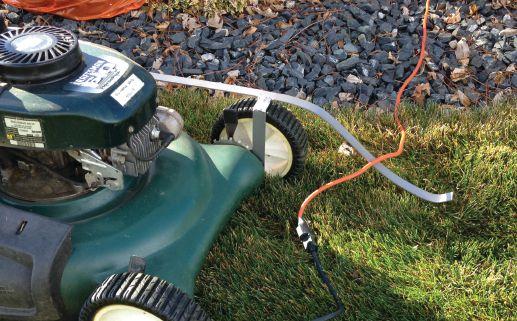
low-hanging branches could still be damaged, Sitarz said, adding time is saved by not having to finish a job using a second piece of equipment. The apparatus also doesn’t interfere with a mower’s cutting height adjustments, nor does it matter whether or not a mower has larger rear wheels.

The Lawnmower Fender is generally mounted opposite the discharge chute on a consumer model mower. Commercial mower mounting will likely be different – depending on the model – but the “spirit” of the device would remain the same.
Fabricated from steel an inch wide and an eighth of an inch thick, it enables bending upwards or downwards for the ideal height and to ensure it doesn’t dig into the ground. At about 40 inches in length, which allows it to attach at the opposite end to the handlebar, a break point has been crafted so that it can fit easier inside a smaller shipping box.
Sitarz said he is not taking orders at this point in the development of the Lawnmower Fender, acknowledging they would have to be manufactured somewhere other than his garage. He said he’s focusing on stirring up interest in the product for the time being.
A website has been created to showcase the device, and anyone interested can contact him for more information through the site. The website also features a number of videos that show the device at work.
Feedback, so far, “is like, ‘Wow, this is really neat.’”
For more information, visit www.thelawnmowerfender.com.

By Randi Bakalar
Sometimes it seems like the cold winter months means fewer jobs and contracts, but it doesn’t have to be that way. With the right equipment winterization and plan, you can achieve success throughout the year. If you are looking to extend your working season and generate additional revenue once the snow flies, consider adding snow and ice removal services. Before you go all in on accepting jobs, plan ahead with these three best practices.
Before taking on winter jobs, make sure you have a clear objective for your snow removal business. Assess your individual needs and determine what kinds of jobs make

sense to take on. In addition, ensure you have a financial cushion to get you through any possible scenario. This decision will be unique to your company, staffing situation and equipment availability.
You may find that additional equipment will be needed to diversify your business. Whether you are considering purchasing

new or pre-owned equipment, this step will ensure that you’re fully prepared to take on drastically different working conditions.
If you’re starting small and easing into snow removal, renting can give you a chance to adjust to new challenges. It also gives you and your employees the opportunity to try different equipment and determine the right choice as a longterm investment.
With the right equipment and attachments, you will be well on your way to diversifying your business year-round.
Winter and snow removal can present a unique set of challenges.
Don’t throw in the towel when cold weather arrives. Start thinking about how your business can adapt to work in snowy conditions. All it takes is careful planning, the right equipment and an operator-focused mindset to keep your business profitable year-round.
To read the full, unedited story, visit www.turfandrec.com
Talent Canada, a national media brand for senior leaders and HR professionals, is proud to launch the Psychologically Safe Workplace Awards.
These aren’t vanity awards. The program is designed to provide your teams with individual data about their mental health, and your organization with a comprehensive dashboard showing where to focus resources.
Got two minutes? Go to PsychologicallySafeWorkplace.com and watch the explainer video.
Scan this for more information

Sponsors



Presented by:
John Deere has integrated its SmartGrade grade control technology into its 333G compact track loader, marking the first time such technology is available on compact equipment.
The SmartGrade 333G compact track loader will expand the capabilities of customers working in site development, road building, landscaping, and residential and commercial building operations by enabling them to take on new tasks and larger jobs that require accuracy. By leveraging the latest grade control technology, the SmartGrade 333G machine levels the playing field with contractors running larger fleets.
The SmartGrade 333G will increase productivity by helping to automatically
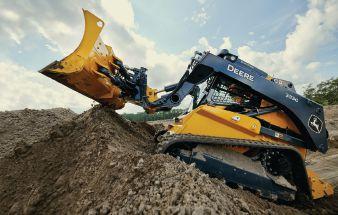
complete grading tasks faster with fewer passes and less rework compared to working without grade control technology. Moreover, operators can reap the benefits of using a versatile, more transportable piece of equipment where the grade control system is fully integrated into the machine’s structures and software, delivering precise grading performance while eliminating vulnerable masts and cables.
In addition to introducing SmartGrade technology on the 333G, operators will also
benefit from the launch of DozerMode, a control solution that enables the EH joystick control system to function like a crawler dozer — with the push of a button. DozerMode is beneficial when operating the machine-equipped, John Deere-designed and -built, six-way dozer blade attachment that can both cut a grade and spread materials, streamlining attachment needs and setup time. The blade is finetuned to meet the performance needs of a compact track loader and does not require tools to change between other attachments. It also enhances the versatility of the machine by accurately and automatically cutting or finishing light materials in tight spaces. In conjunction with SmartGrade technology, the blade reduces the amount of operator input, ultimately lowering operator fatigue. deere.ca/en/

For more than a decade, the Color Atlas of Turfgrass Weeds has been the leading authority for green industry professionals in their ongoing quest to control weeds and limit deleterious effects: the weed clumps, color variation, and unsightly patches that disrupt turf uniformity. The Second Edition of this essential resource has been expanded and updated to provide control information that professionals need to maintain the quality that is so vital to the golf, sports field, and managed landscape industries.
$176.00 Item #0470189511
Safety shoes provide outdoor workers with athletic style, comfort and cushioning Landscapers, golf course maintenance staff and other outdoor workers can move with ease throughout the workday with the athletic version of KEEN Utility’s CSA Flint II series of safety footwear.
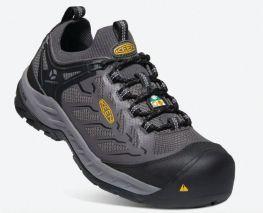
Featuring carbon-fibre safety toes that are 15 per cent lighter than steel and KEEN.ReGEN midsole cushioning, the shoes feature an unobtrusive fit. KEEN.ReGEN is a lightweight, compression-resisting midsole that provides 50 per cent more energy return than standard EVA foam. KEEN.ReGEN was introduced in early 2019 as a proprietary lightweight, performance midsole technology. Now, even lighter than the original Flint, the reinvented Flint II gets the added benefit of the KEEN.ReGEN’s all-day comfort and extreme underfoot cushioning, support and shock absorption along with a superior compression-resistance that “bounces” back.
The shoe also features a puncture-resistant midsole plate and left and right asymmetrical toes. The Flint II Sport’s 100 per cent non-metallic construction allows for easy pass-through in highly-secured areas where metal detectors otherwise would stop boots with metal eyelets, toe caps and lace hooks.
The shoes are also electric shock resistant (ESR), providing a secondary source of protection in case of accidental contact with live electrical circuits. keenfootwear.com/en-ca/p/M-CSA-FLINT-II-SPORT.html
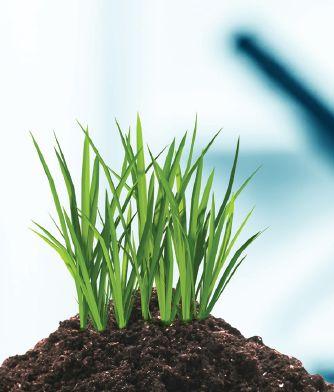




Toro introduces new Bullseye product line Toro has introduced a new product line of grass and turf maintenance equipment. The Bullseye product line includes grooming, cleaning and de-compacting solutions for synthetic turf managers – in addition to brushes, cultivation, renovation and seeding solutions for those maintaining any type of natural grass.
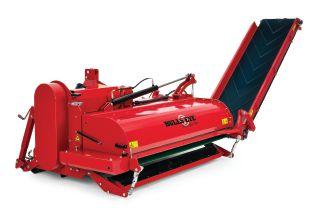
The Bullseye QuickGroom 550, QuickGroom 700 and QuickGroom 710 can all be configured as towable brushes, ideal for grooming all turf. They’re lightweight and easy to pull, and the brushes feature long-lasting bristles that are aggressive enough to stand up leaf blades and turf fibres or incorporate topdressing and infill materials, yet soft enough to minimize plant stress and turf wear.
The FieldCombo 770, FieldClean 580, FieldMagnet 600, FieldFill 660 and FieldSweep 660 all provide effective and efficient ways to groom, clean and de-compact synthetic turf fields. The Bullseye lineup has a tool to complete any of the three primary field maintenance tasks, and with the available accessories to choose from, their versatility can be expanded to suit each customer’s specific needs.
The remaining Bullseye products provide natural grass solutions. The AccuraSeed 620 slit seeder and the RapidSeed 430 and 590 dimple seeders provide highly efficient seeding options. toro.com/en/commercial/bullseye
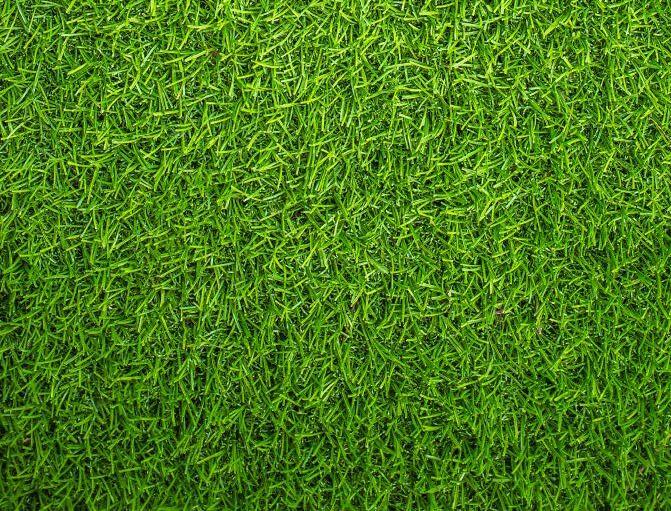



By CCOHS
The Canadian Centre for Occupational Health and Safety (CCOHS) promotes the total well being of workers in Canada by providing information, training, education, systems and solutions that support health and safety programs and injury and illness prevention. www.ccohs.ca
If you work outside and under the summer sun, you’ve probably noticed those envious looks from passersby who wish they could work outdoors in the nice weather, too. However, just as the sun brings the welcomed heat, it also is responsible for a number of serious and unwelcomed illnesses among outdoor workers, making it important to be aware of the occupational hazards.
When factors such as hot weather and muscle exertion produce heat, your body regulates its own temperature by allowing you to sweat. Moving air also helps to cool you down. In extreme temperatures or under prolonged work periods, however, the body may no longer be able to cool itself, and your health may be at risk.
Heat stroke is a serious and potentially fatal illness. Symptoms can vary from person to person, however, anyone with dry, hot skin, and increased body temperature above 41 degrees Celsius (106 degrees Fahrenheit) could be suffering heat stroke and needs immediate medical help. Loss of consciousness, seizures, altered behaviour, and confusion are also symptoms of heat stroke. Extreme heat can also bring on heat exhaustion, which occurs when the body becomes dehydrated from excessive sweating. The symptoms of heat exhaustion include moist and warm skin, weakness, dizziness, thirst, nausea or vomiting, headache, fainting, or muscle cramps.
People who are experiencing

heat-related illness – particularly heat stroke – often don’t recognize their own symptoms, which is why it’s so important that co-workers know how to recognize symptoms, and that they immediately seek first aid and medical help.
Not all summer hazards are due to heat. Too much sun exposure can cause injury and illness, too, like harm to your eyes, sunburns, and skin cancer. The sun’s ultraviolet (UV) rays cause skin cancer by altering skin cells, and tans and sunburns are both signs that UV rays have damaged the skin. If you have been overexposed to the sun, it’s important to check your skin every few months for irregularities such as sore ulcers, a scaly patch on the skin, a white patch on the lips that doesn’t heal, or moles that grow quickly, change shape or colour, or bleed repeatedly. See a doctor if you see these or any other skin condition that doesn’t heal.
Although it’s important to recognize the symptoms of skin cancer and heat-related illness, it is safer to prevent exposures in the first place. Even when you’re braving the heat for most of your workday, there are ways to protect yourself from overheating, burns, and other health risks.
Avoid the sun. If you’re able to, avoid working in the sun between 11 a.m. and 4 p.m., when the sun’s rays are the most intense, and plan outdoor work for the early morning or late afternoon. When avoiding the sun isn’t possible, workplaces can rotate workers between site locations to help reduce UV exposure or consider using tents or sunshades to reduce direct sunlight.
Get acclimatized. It sometimes takes six to seven days for the body to fully adapt to working in the heat, so if you’re new or not used to the environment, ease into tasks gradually.
Take frequent breaks and keep hydrated. As an outdoor worker, you need frequent breaks in a cool or well-ventilated area. Drink plenty of water, frequently, to replace the fluids you lose by working in the heat and avoid consuming dehydrating drinks like caffeine or alcohol. Take breaks in a cool area, where possible, including an air-conditioned vehicle.
Wear protective clothing and sunglasses. Wear sunglasses that are UV-rated, ideally with a wrap-around style for the most protection. Cover up as much as possible. Wide-brim hat and loose-fitting clothes made of a light, breathable fabric, are recommended. Although longsleeved shirts and long-legged pants may not be comfortable in extremely hot weather, they do help protect the skin.
Wear sunscreen as extra protection. Cover any exposed, uncovered skin with sunscreen and, when possible, work in shade while wearing suitable clothing, hats and sunglasses. To reduce the sun’s effects, apply sunscreen 20 or 30 minutes before exposure. Wipe it generously onto the skin, but don’t rub it in. Choose a sunscreen that blocks both UV-B and UV-A rays and has a SPF of at least 30 or higher. Reapply it every two hours, especially after strenuous exercise or when your skin is wet.
Have an emergency plan. In a heat-related emergency, quick action could save a life. Employers should have an emergency plan in place for providing timely first aid.
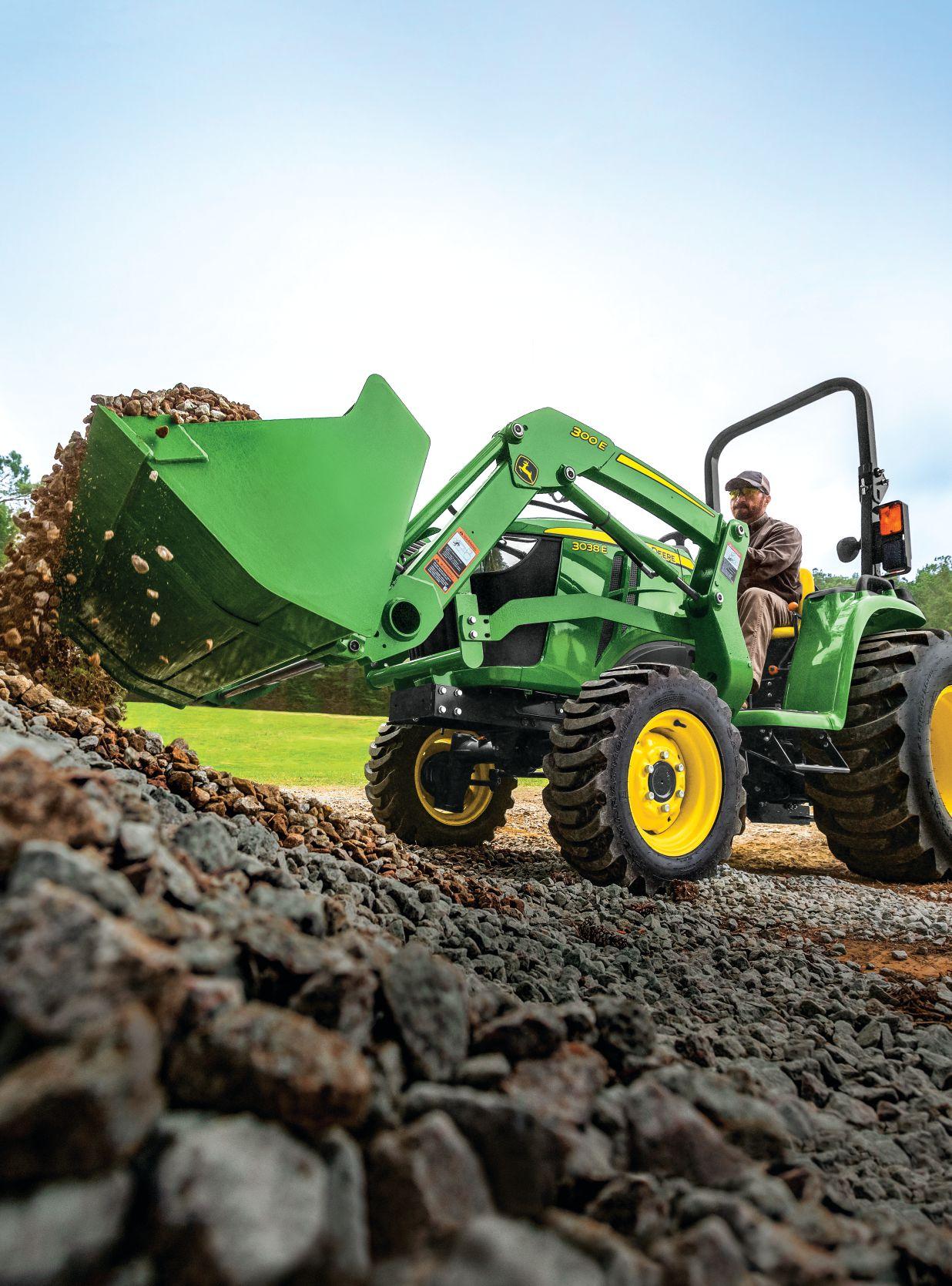

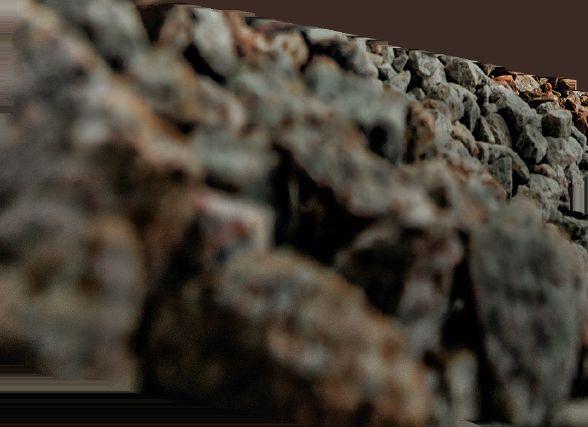
Build water features. Move mulch. Dig drainage ditches. Plant a row of trees. Dump gravel. Run with us with a 25 HP* (18 kW), 32 HP (23 kW), or 38 HP (27 kW) 3E Compact Utility Tractor with an optional backhoe and a loader and really dig in. With all the attachments you can get, there’s really not much that you and your crew cannot do. The 44 in. (111.76 cm) turning radius is tight, so nothing will get in your way. Dig in with the mighty 3.






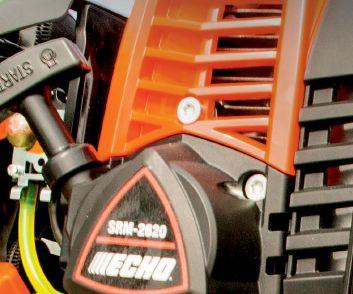








ECHO SRM-2620/T 25.4 CC STRAIGHT SHAFT TRIMMER
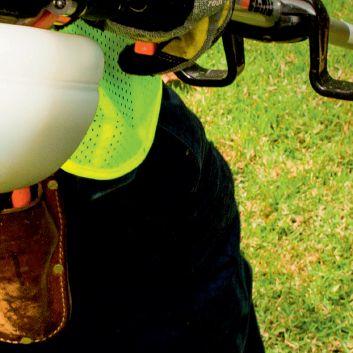

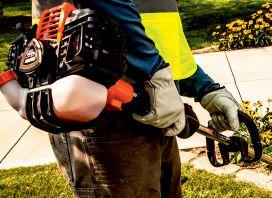
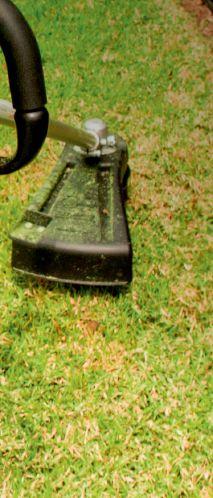
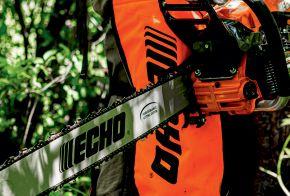

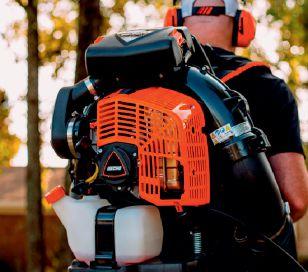
LIGHT WEIGHT. GREATER PRODUCTIVITY. UNBEATABLE WARRANTY.